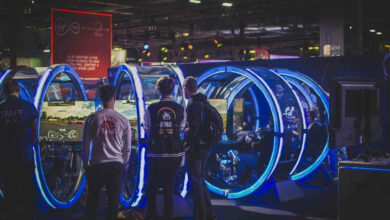
Doom
Developed by id software, the studio that pioneered the first-person shooter genre and created multiplayer Deathmatch, DOOM returns as a brutally fun and challenging modern-day shooter experience. Relentless demons, impossibly destructive guns, and fast, fluid movement provide the foundation for intense, first-person combat – whether you’re obliterating demon hordes through the depths of Hell in the single-player campaign, or competing against your friends in numerous multiplayer modes.
One of the biggest surprises was the sheer brutality of this reboot. Finishing an enemy toe-to-toe will activate an animation (there are several of each kind) in which you kill them, whether it’s with a knee to the nose or snapping their neck. With such fast-paced combat, it’s hard to stop and remember that you’ve got more options available than just pulling the trigger, but melee kills are more than just a nice aesthetic touch for the campaign.
The most interesting thing of all is that this is a game that holds no quarter, that doesn’t make any compromises. There are no concessions. If you can’t react quick enough you’ll end up at the bottom of your team.




2 Comments